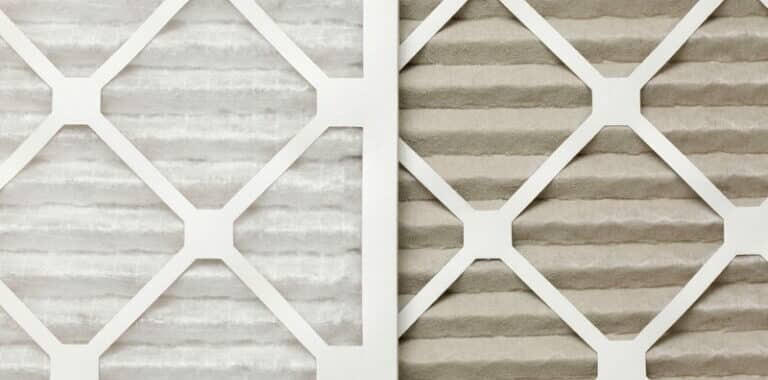GUARANTEED COMFORT & AFFORDABILITY
Whether you need heating, air conditioning, or indoor air quality services, we have an HVAC contractor ready to handle the job.
Working Hours : Monday to Friday (7am - 5pm)

If you’re searching for air filters for your HVAC system, you’ll immediately come across several different choices, not all with obvious answers. One of the big choices you’ll face is “fiberglass air filter vs. pleated air filter.” When you’re shopping for options, you’ll often gravitate toward the less expensive choice. This isn’t always ideal, even if it may seem like the right option for your budget.
To make the best choice, you’ll have to weigh several factors, including price, how often you need to change to filter, and the filter’s power. Below we’ll provide a guide that will make this easier. We’re available to help you make the best choice for filters as well as develop a schedule for how often you need to change the filter. Keep in mind that the type of filter will have a large impact on how effectively and efficiently your HVAC system operates—the right filters will immensely benefit your comfort and budget.
Fiberglass filters are the most common type of filter, and you can find them in most stores in multi-packs. Fiberglass filters provide a basic screen to stop particles and are generally less sturdy than pleated filters; they aren’t designed to last for long.
Pros: The major advantage of these filters is that they don’t cost much. You can usually purchase them from home improvement stores in packs where each filter comes to a little more than a few dollars. They do an effective job against the standard contaminants that can get inside an HVAC cabinet: dust, lint, and dander. They allow for easy airflow and won’t interfere with the blower fan of the HVAC system until they become clogged.
Cons: These filters require frequent changes because they have less surface area and will rapidly develop clogging. We recommend changing a fiberglass filter every month, even if you don’t use the HVAC system that often. The filter strength is also low: it stops big particles, but plenty of smaller ones like pollen and bacteria will slip through. Because they don’t have sturdy construction, fiberglass filters are more prone to collapsing and potentially causing damage to the blower assembly.
These are more advanced filters with a larger surface area to trap particles, as well as a stronger weave. You can find them in a variety of sizes, from 1” to 6”.
Pros: Pleated filters have more powerful filtering capabilities so they’ll catch more particles, including smaller ones that can get through a fiberglass filter. The larger surface area and stronger weave mean they need to be changed less often—we recommend putting in a new filter every 3 months, although some 6” filters can last for 6 months.
Cons: These filters cost more to purchase, ranging from $5 to $15. The lower frequency of changes does offset this. For some HVAC systems, a pleated filter may be too powerful and it will restrict airflow and cause a decline in system energy efficiency. Check with our HVAC experts about this.
Peak Home Performance: Guaranteed Comfort and Affordability. Find out how to get two free tune-ups a year and other benefits! Learn more.
Leave a Reply